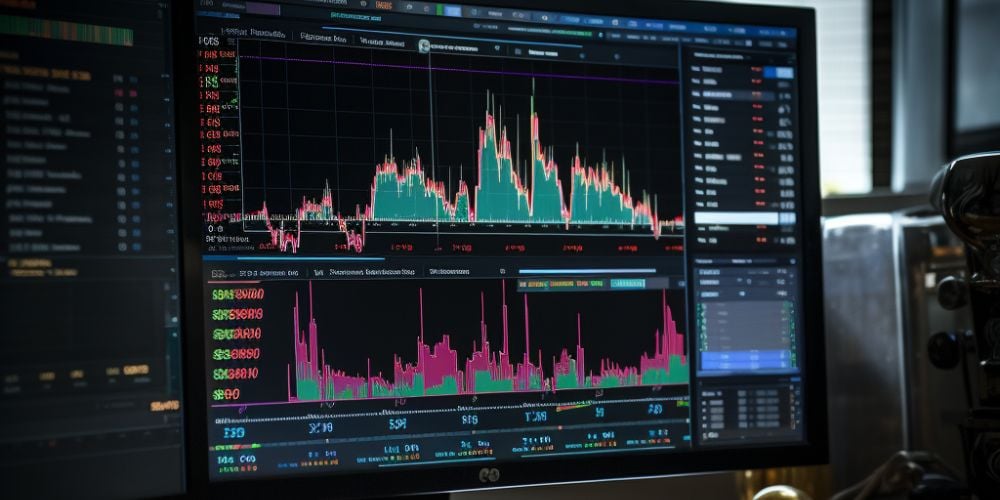In the ever-evolving landscape of the semiconductor industry, few names resonate as strongly as the Taiwan Semiconductor Manufacturing Company (TSMC).
Renowned for its technological prowess and market dominance, TSMC has played a pivotal role in shaping the global semiconductor market.
However, understanding TSMC’s standing requires a closer examination of TSMC Competitors, each contributing to the intricate tapestry of this dynamic industry.
TSMC: A Giant in Semiconductor Manufacturing
TSMC stands tall as a global leader in semiconductor manufacturing. With a history dating back to 1987, the company has consistently pushed the boundaries of technology, earning a reputation for reliability and innovation.
TSMC’s semiconductor manufacturing prowess extends across various industries, including consumer electronics, automotive, and telecommunications.
The company’s market share is substantial, reflecting its influence on the broader semiconductor ecosystem.

TSMC Competitors: Detailed Analysis
Intel Corporation
Intel, a stalwart in the semiconductor arena, has a rich history dating back to 1968. Initially known for its dominance in the CPU market, Intel has diversified its portfolio, delving into semiconductor manufacturing.
While historically a heavyweight, Intel has faced challenges, notably in adapting to the fast-paced advancements in semiconductor technology. Despite setbacks, Intel remains a formidable competitor, leveraging its vast resources and technological expertise.
Yes, there are several other major competitors in the semiconductor industry. A few notable ones include:
Qualcomm Inc.
Qualcomm is an American multinational corporation known for its semiconductor products and services, primarily within the wireless communication industry.
The company’s Snapdragon chipset is used in many global flagship smartphones. They have also recently entered the PC chip segment to compete with Intel and AMD.
Advanced Micro Devices (AMD)
AMD is a multinational semiconductor company that develops computer processors and related technologies for business and consumer markets.
AMD’s main products include microprocessors, motherboard chipsets, embedded processors and graphics processors for servers, workstations, personal computers and embedded system applications. Recently, AMD has been gaining market share, especially in the CPU segment, against Intel.
Broadcom Inc.
Broadcom Inc. designs, develops, and supplies semiconductor and infrastructure software solutions.
They offer a wide range of semiconductors for various applications including data center networking, home connectivity, broadband access, telecommunications equipment, smartphones, and more.
Micron Technology, Inc
Micron is an American producer of computer memory and computer data storage and one of the world’s leading semiconductor companies.
They provide DRAM components and modules used in leading-edge computing, consumer, networking, embedded and automotive applications.
Samsung Electronics
Samsung Electronics, a global conglomerate, has made significant inroads into semiconductor manufacturing. With a diverse portfolio spanning memory chips, processors, and advanced semiconductor technologies, Samsung has emerged as a key player.
The company’s vertical integration, from manufacturing to end-user devices, provides a unique competitive advantage. However, like any industry giant, Samsung grapples with challenges, including technological transitions and market fluctuations.

GlobalFoundries
GlobalFoundries, a relative newcomer compared to industry veterans like TSMC and Intel, has carved out a niche for itself.
Established in 2009, GlobalFoundries offers semiconductor manufacturing solutions with a focus on advanced technologies.
The company’s strategic partnerships and commitment to innovation position it as a contender in the competitive semiconductor landscape.
GlobalFoundries’ success lies in catering to specific market segments and fostering collaborative relationships with technology partners.
Niche Players and Emerging Competitors
SMIC (Semiconductor Manufacturing International Corporation)
SMIC is a prominent player in the semiconductor manufacturing sector. Based in China, SMIC has rapidly advanced its technological capabilities, posing a potential challenge to established players like TSMC.
SMIC’s emphasis on research and development has led to notable achievements, yet the company faces scrutiny due to geopolitical tensions, impacting its global market reach.
UMC (United Microelectronics Corporation)
UMC may not command the same spotlight as industry giants, but its contributions to semiconductor manufacturing are noteworthy.
Established in 1980, UMC has positioned itself as a reliable foundry partner, specializing in diverse semiconductor technologies. While facing intense competition, UMC continues to grow, leveraging its expertise in meeting the specific demands of various market segments.
Technological Advancements and R&D Initiatives
TSMC’s commitment to research and development (R&D) has been a linchpin of its success. The company consistently invests in cutting-edge technologies, ensuring it stays ahead of the technological curve.
Intel, Samsung, and GlobalFoundries similarly prioritize R&D, each contributing to the industry’s technological tapestry. The competitive landscape hinges on innovation, with companies vying to develop smaller, more efficient, and powerful semiconductor solutions.
Market Dynamics and Global Trends
The semiconductor industry operates in a dynamic environment shaped by various factors. Current trends reflect a growing demand for advanced semiconductor solutions, driven by the proliferation of emerging technologies such as artificial intelligence, 5G, and the Internet of Things.
Geopolitical factors, such as trade tensions and supply chain disruptions, add an additional layer of complexity to the industry’s competitive dynamics.

Frequently Asked Questions
What is the significance of TSMC in the semiconductor industry?
TSMC’s significance in the semiconductor industry is multifaceted. As a leading foundry, TSMC plays a crucial role in manufacturing semiconductor chips for a diverse range of applications. Its technological advancements and expansive market share contribute significantly to the industry’s overall growth.
Intel Corporation, historically known for its dominance in CPU manufacturing, faces challenges in keeping pace with TSMC’s advancements in semiconductor technology. While Intel holds a substantial market share, the company has encountered difficulties in adapting to the rapid evolution of semiconductor processes.
What are the key strengths and weaknesses of Samsung Electronics in the semiconductor sector?
Samsung Electronics boasts a diversified portfolio and vertical integration, allowing it to manufacture a wide range of semiconductor components and end-user devices. However, challenges arise in navigating technological transitions and market fluctuations, impacting Samsung’s competitiveness.
Can emerging players like SMIC pose a threat to TSMC’s dominance?
Yes. With a focus on research and development, SMIC has made strides in advancing its technological capabilities. However, geopolitical tensions may impede its global expansion, limiting the extent of its threat to TSMC.
How do geopolitical factors influence competition among semiconductor manufacturers?
Geopolitical factors, such as trade tensions and supply chain disruptions, significantly impact semiconductor manufacturers. These factors can influence market dynamics, supply chain resilience, and the strategic positioning of companies, shaping the competitive landscape of the semiconductor industry.
Conclusion
The semiconductor industry is a dynamic and competitive space, with TSMC and its competitors shaping the technological landscape.
Understanding the strengths, weaknesses, and strategic initiatives of these players provides valuable insights into the industry’s trajectory and the challenges and opportunities that lie ahead.

 Tags:
Tags:










